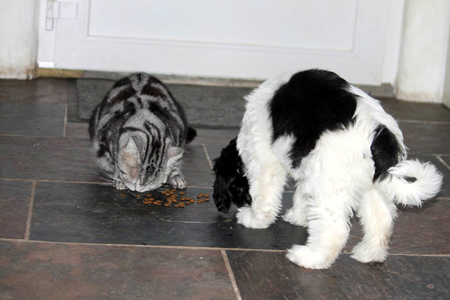
Polish Lowland Sheepdog - pons - pon the dog

PON von Regensdorf ,Switzerland
PON Eye Care
|
How often do you check your PON's eyes ? You should inspect your PON's eyes on a daily basis to detect inflammation, tearing, etc. that may indicate a developing vision issue. What should your PON's eyes look like ? They should be clear and bright, and the area around the eyeball should be white. Pupils should be equal in size and there shouldn’t be tearing, discharge or any crust in the corners of your PON's eyes. Using your thumb, gently roll down your PON's lower eyelid and look at the lining. It should be pink, and not red or white. If you notice the following symptoms, something may be wrong with one or both of your PON's eyes:
Which eye care can you undertake at home ? A gentle wipe with a damp cotton ball will help to keep your PON's eyes gunk-free. Wipe outward from the corner of the eye and be careful not to touch his eyeball—you don’t want to scratch the cornea. If your PON consistently suffers from runny eyes and discharge, please see your veterinarian. Your PON may have an infection, allergies,etc. Prevent Problems:Soaps and topical medications can be major irritants. Make sure to protect your PON's eyes before bathing or applying ointments or flea-control formulas. Many PONS love nature and the wind in their fur, but if debris or an insect impacts eyes, they may suffer pain and a long-lasting injury. It’s much safer to drive with the windows only partially down and your PON's head inside the car. The wind can also dry out your PON's eyes, which may cause irritation and infection. Be alert: Observe your PON's body language—pawing or rubbing his eye area may alert you to possible problems. The following eye-related disorders are often observed in dogs: Conjunctivitis: One or both of your dog’s eyes will
look red and swollen, and there may be discharge.
Don't take your PON's vision for granted. Visit your vet on a regular basis.
|